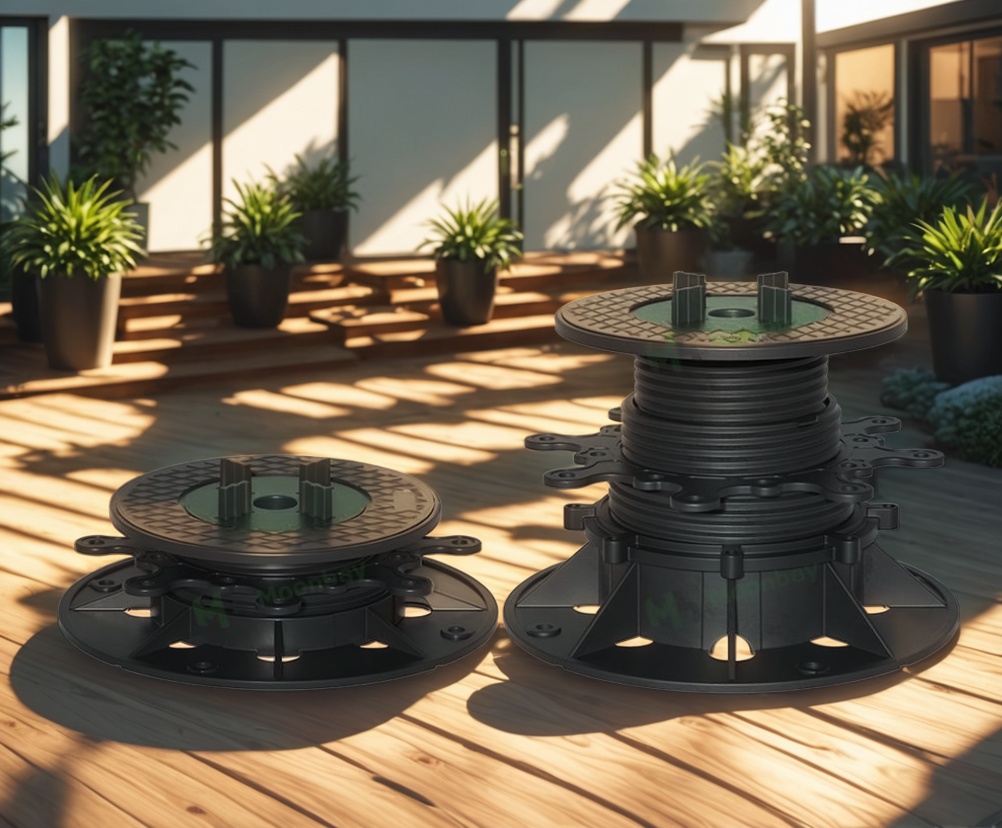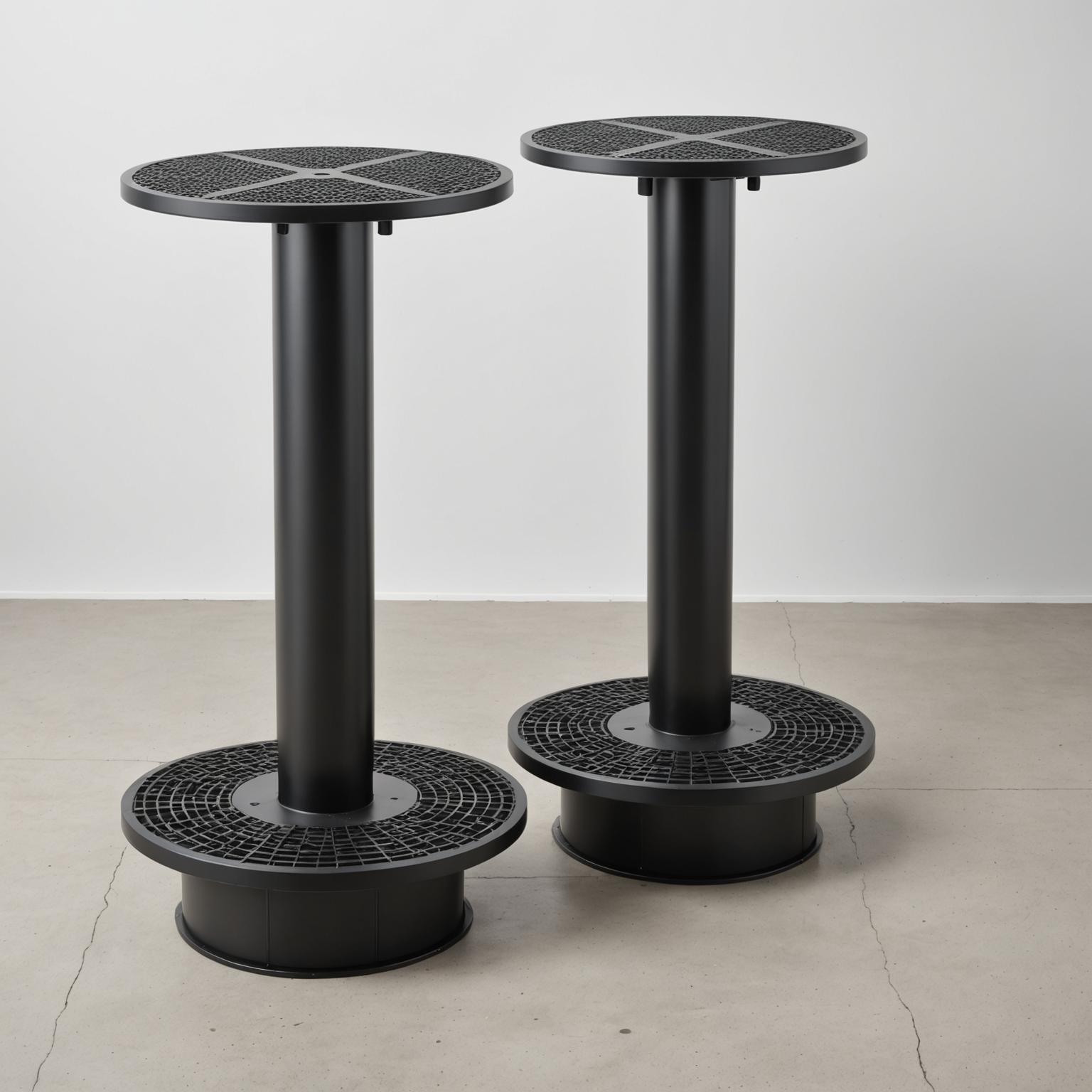In the world of modern architecture and interior design, the pursuit of clean lines, seamless transitions, and flawless surfaces is paramount. We dream of patios that flow effortlessly from our living rooms, rooftop terraces that feel perfectly stable, and furniture that adapts to its environment. Often, the secret to achieving this level of perfection lies not in what is seen, but in the unseen structural support. The Adjustable pedestal is one such unsung hero, an innovative system that is fundamentally changing how we build, design, and interact with our spaces, providing a foundation of unparalleled stability and versatility.

What is an Adjustable Pedestal?
At its core, an adjustable pedestal is a marvel of simple yet sophisticated engineering. Picture a system designed for precision elevation. It typically consists of a wide, stable base that rests securely on the ground or subfloor, a threaded central column that allows for millimeter-perfect height adjustments with a simple twist, and a head designed to cradle the paving slab, decking joist, or structural element. Crafted from high-density, industrial-grade polypropylene, these pedestals are built to endure. They stand defiant against harsh UV exposure, extreme temperature fluctuations, and the crushing weight they are designed to support. This material choice ensures they will not rust, rot, or degrade over time, offering a permanent solution for creating perfectly level surfaces, even on sloped or uneven terrain.
Transforming Spaces with Adjustable Pedestal Furniture
The genius of this system is its adaptability, which has allowed it to migrate from construction sites into the realm of high-end design, particularly with adjustable pedestal furniture. Imagine creating a bespoke outdoor lounge area on a patio with a slight gradient. Instead of a costly and complex concrete pour to level the area, these pedestals can be placed underneath a custom frame. The result is a seating area that appears to float elegantly above the ground, perfectly level and stable. This application of adjustable pedestal furniture allows for incredible creativity. Designers can build multi-level platforms, floating benches, or raised daybeds, all while concealing services like lighting cables or irrigation lines in the void created underneath, maintaining a clean and uncluttered aesthetic.
The Rise of the Adjustable Pedestal Table
Perhaps one of the most exciting applications is the adjustable pedestal table. For both commercial and residential settings, achieving a stable, wobble-free table on an uneven surface like old stone flagging or a rooftop deck can be a constant battle. The adjustable pedestal table concept solves this instantly. By using one or more pedestals as the base for a heavy tabletop made of granite, concrete, or reclaimed wood, you create a centerpiece that is as solid as it is beautiful. For a rooftop bar, this means patrons will never have to steady a wobbly table. At home, your outdoor dining experience is elevated, with a grand, stable table that becomes the focal point for gatherings. The system’s strength allows for ambitious designs that would be impractical with conventional table legs, making the adjustable pedestal table a go-to for designers seeking both form and function.
Engineering Excellence and Ease of Installation
Beyond the aesthetic possibilities, the technical design of the Adjustable pedestal system is what makes it truly revolutionary for builders and DIY enthusiasts alike. The installation process is remarkably intuitive. The pedestals are placed at planned intervals, and the height is fine-tuned by hand, allowing for a swift and precise leveling process across a large area. Many pedestal heads come with integrated spacer tabs, which ensure uniform and perfect spacing between paving slabs or decking boards, resulting in a professional finish without tedious measuring. This design not only speeds up installation dramatically but also promotes air circulation and drainage in the cavity below the finished surface, which is crucial for preventing moisture buildup and extending the life of decking materials.
The Unseen Hero of Creative Design
The versatility of the system continues to inspire new uses. Architects and landscapers are using them to create raised garden walkways, floating platforms for water features, and perfectly level foundations for temporary event structures. The ability to precisely control the height and support significant weight opens a new playbook for creative problem-solving. This is where the concept of adjustable pedestal furniture shines, moving beyond just seating to include raised display plinths in galleries, modular staging for events, or elevated platforms for outdoor kitchens. The pedestal becomes a foundational building block for imagination, providing the robust, hidden support that allows the surface materials and the overall design to take center stage. The elegant simplicity of the final look belies the sophisticated engineering working tirelessly underneath.

